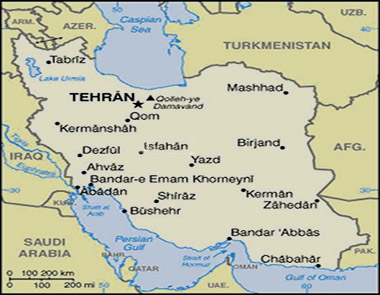History and Origin of Isfahan rugs
The history and origin of Isfahan rug is deeply rooted in Persia's rich cultural past. Isfahan, one of the most important cities in the Persian Empire, has been famous for its high quality carpets since the 16th century. During the Safavid dynasty, especially during the reign of Abbas Shah I, the city flourished in arts and crafts, including rug-making. The carpet workshops, established with the Shah's support, followed strict quality standards and were staffed by the most talented craftsmen, creating the masterpieces that are still world famous today. Isfahan carpets are not only beautiful decorative objects, but also important symbols of Persian culture. These carpets often depict Persian mythological stories, religious symbols, and the wonders of nature, all in precise detail and subtle colours. Because of the city's central location, Isfahan's carpets reflect a variety of motifs and techniques, combining not only local motifs but also those from farther afield. Isfahan carpets have maintained their prestige over time and are still sought after worldwide. Original handmade pieces are a serious investment, and their value only increases with time.

Designs, patterns and colours of Isfahan carpets
The designs, motifs and colours of Isfahan rugs are extremely complex and carefully composed, reflecting the sophistication and detail of Persian art. The central element of the carpets is usually a dominant medallion pattern surrounded by floral motifs and geometric shapes. Isfahan carpets are famous for their symmetrical arrangements and the traditional Persian "Shah Abbas" pattern, which is a distinctive feature of carpets made in the city. The harmony of patterns and colours gives Isfahan carpets a unique look that exudes a unique elegance and brings sophistication to any environment. The experience of generations of craftsmen is reflected in these rugs, which are truly works of art.
The production process of Isfahan rugs
The process of making Isfahan rugs is a sophisticated and time-consuming craft that has been handed down through generations. Each Isfahan rug is made using the highest quality materials, including fine wool, silk and cotton. The rug-making process begins with weaving techniques, which is preceded by a careful design process in which artisans create precise patterns and colour combinations. The knotting technique is one of the defining elements of Isfahan rugs, as it gives the rugs their famous delicacy and detail. Isfahan carpets are traditionally made using the "Persian knotting" technique, where each knot is placed by hand. This technique allows for the creation of highly detailed patterns and intricate geometric shapes. A single rug can take several months or even years to complete, depending on the complexity of the design and the size of the rug. A special feature of Isfahan rugs is their extremely high knot density, often exceeding half a million knots per square metre. This ensures the durability and longevity of the carpets, while adding stunning detail and delicacy to their appearance. Finally, the finished carpets undergo careful post-processing to ensure a smooth surface and flawless finish.

